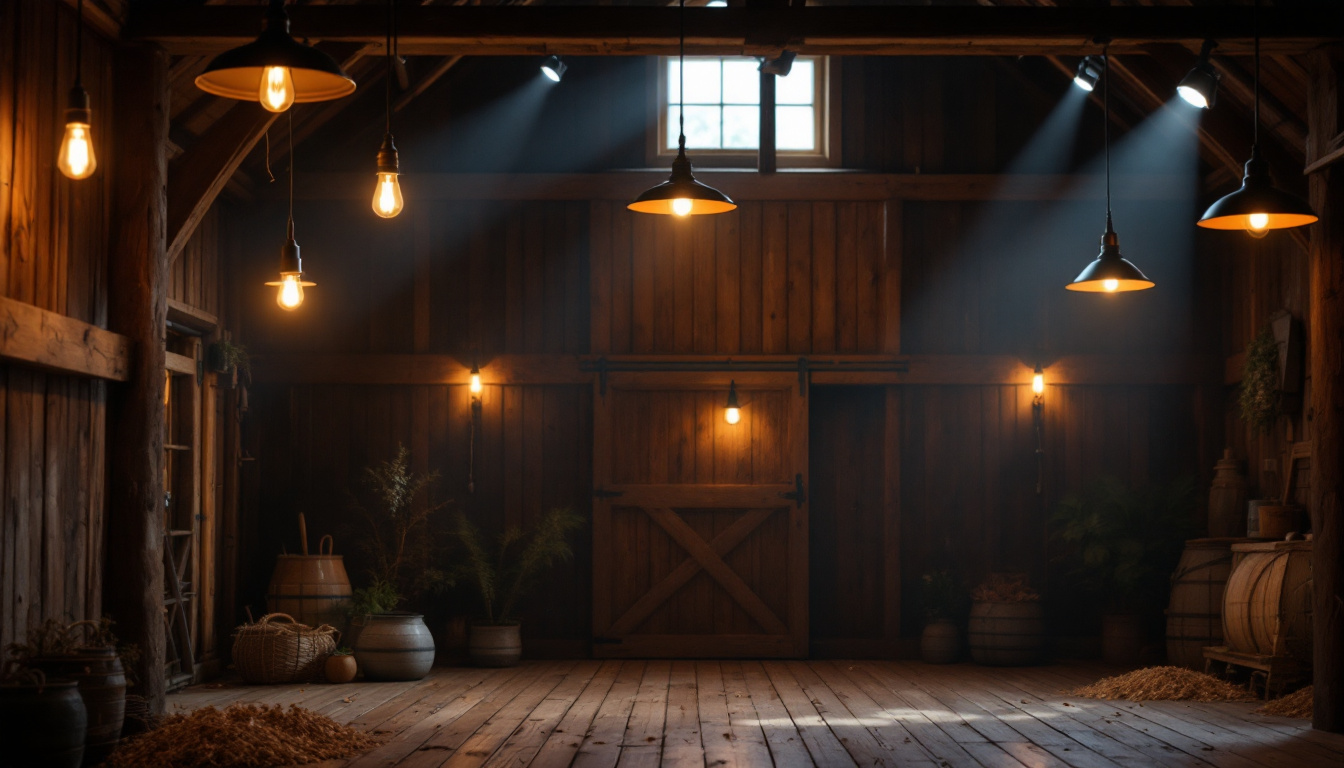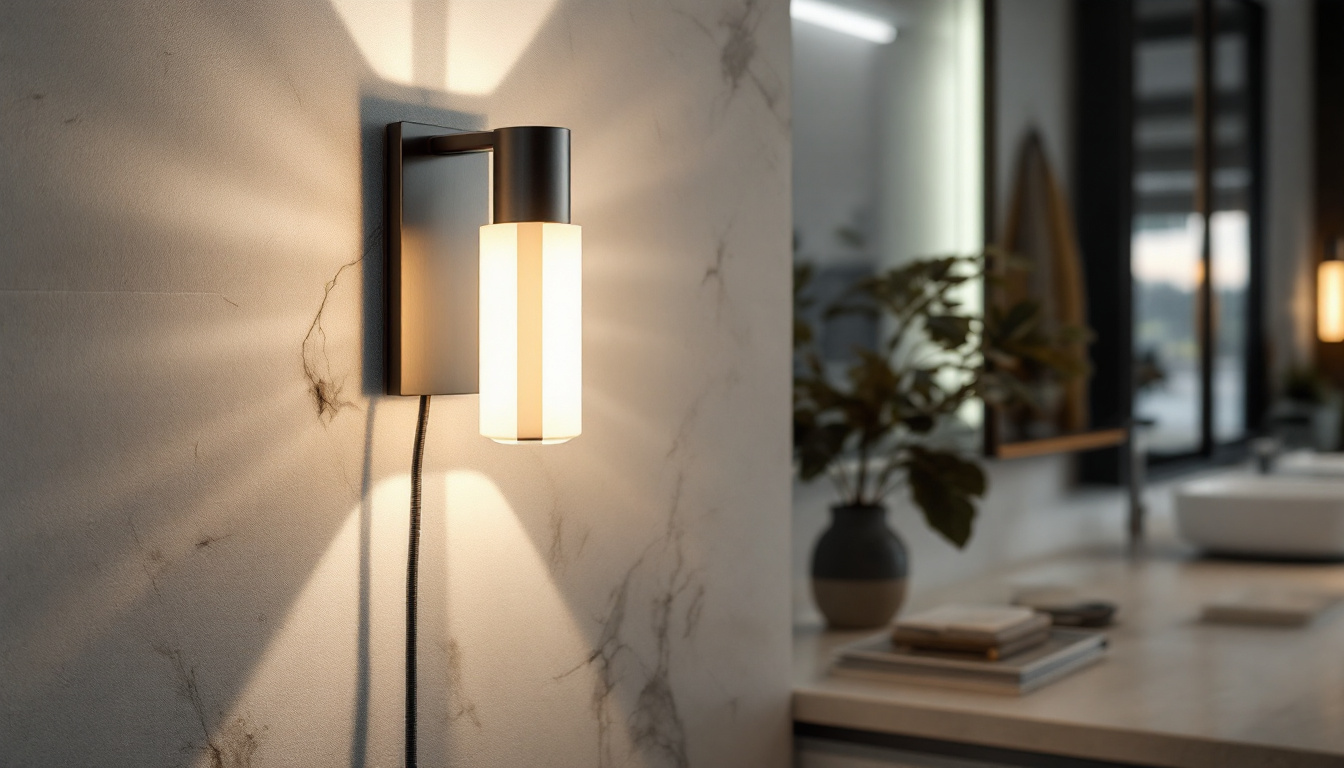
In the realm of agricultural and rural settings, barn lights play a crucial role in ensuring safety, functionality, and aesthetics. As a lighting contractor, understanding how to optimize these fixtures for maximum efficiency is essential. This article delves into various aspects of barn lighting, from energy-efficient technologies to strategic placement, ensuring that every barn can benefit from optimal illumination.
Lighting in barns is not merely about visibility; it encompasses safety, productivity, and the well-being of both animals and workers. Proper lighting can significantly influence the daily operations within a barn, impacting everything from animal behavior to the efficiency of tasks performed by workers.
Moreover, effective lighting can enhance the overall atmosphere of the barn, making it a more inviting space for both humans and animals. Understanding the specific needs of the barn environment is the first step toward optimizing lighting solutions. For instance, natural light can be harnessed through strategically placed windows or skylights, which not only reduce energy costs but also create a more pleasant environment. The use of natural light can help regulate the circadian rhythms of animals, promoting their health and productivity.
Safety is paramount in any agricultural setting. Poorly lit areas can lead to accidents, injuries, and even fatalities. Ensuring that all areas of the barn are adequately lit can help prevent these risks. This includes not only the main working areas but also pathways, entrances, and emergency exits.
Utilizing motion sensors can be an effective way to enhance safety. These sensors can automatically activate lights when movement is detected, ensuring that workers have adequate visibility without wasting energy when the barn is unoccupied. Additionally, installing LED lights with a high color rendering index can improve visibility, allowing workers to see colors and details more clearly, which is particularly important when handling equipment or monitoring animal health. Regular maintenance of lighting fixtures is also essential to ensure that all areas remain well-lit and safe.
Lighting affects animal behavior significantly. For instance, certain wavelengths of light can promote calmness in livestock, while others may cause stress. Understanding the specific lighting needs of different species can lead to better animal welfare and productivity.
Additionally, the duration and intensity of light exposure can influence reproductive cycles in some animals. Therefore, lighting systems should be designed with these factors in mind, ensuring that they cater to the biological needs of the animals housed within the barn. For example, using dimmable lights can allow for gradual changes in light intensity, mimicking natural dawn and dusk, which can help reduce stress and improve overall animal comfort. Furthermore, incorporating different lighting zones within the barn can provide tailored environments for various species, enhancing their well-being and encouraging natural behaviors, such as grazing or resting, which are crucial for their health and productivity.
When it comes to selecting barn lights, there are several options available, each with its own advantages and disadvantages. The choice of lighting technology can significantly impact energy consumption, maintenance costs, and overall efficiency.
LED lights have emerged as the preferred choice for many agricultural settings due to their energy efficiency and longevity. Unlike traditional incandescent bulbs, LEDs consume significantly less energy and have a lifespan that can exceed 25,000 hours. This translates to lower electricity bills and reduced maintenance costs.
Furthermore, LEDs are available in various color temperatures, allowing for customization based on specific needs. For example, cooler temperatures can enhance visibility in work areas, while warmer tones may create a more comfortable environment for animals. The ability to dim LED lights also adds flexibility, enabling farmers to adjust brightness levels according to the time of day or specific tasks, thereby optimizing energy use and enhancing the working atmosphere.
Fluorescent lights are another option commonly used in barns. They are more energy-efficient than incandescent bulbs and provide a good amount of light. However, they may not last as long as LEDs and can be more sensitive to temperature fluctuations, which can be a concern in unconditioned barn environments.
Despite these limitations, fluorescent lights can be an economical choice for certain applications, especially in areas where high-intensity lighting is not critical. They are particularly effective in large spaces, as they can illuminate wide areas without the need for multiple fixtures. Additionally, the availability of compact fluorescent lamps (CFLs) allows for versatility in installation, making them suitable for both overhead fixtures and wall-mounted applications.
For barns located in remote areas or those seeking to reduce their carbon footprint, solar-powered lighting can be an excellent solution. These systems harness solar energy to power lights, making them independent of the electrical grid.
While the initial investment may be higher, the long-term savings on electricity bills and the environmental benefits can make solar-powered lights a compelling option. Additionally, advancements in solar technology have improved the efficiency and reliability of these systems, making them more viable than ever. Many solar lights now come equipped with motion sensors, which can enhance security by illuminating areas only when movement is detected, further conserving energy. Moreover, the ease of installation—often requiring no wiring—makes solar solutions particularly appealing for those looking to minimize disruption during setup.
Even the best lighting fixtures can underperform if not strategically placed. Proper light placement is essential for maximizing efficiency and ensuring that all areas of the barn are adequately illuminated.
Before installing lighting, it is crucial to conduct a thorough assessment of the barn’s layout. This includes identifying key areas that require illumination, such as workstations, feed areas, and animal housing. Understanding the flow of movement within the barn can also inform where lights should be positioned to minimize shadows and maximize visibility.
Additionally, considering the height of the barn ceiling is vital. High ceilings may require different types of fixtures or mounting techniques to ensure that light reaches the ground effectively. For instance, pendant lights or high-bay fixtures can be employed in spaces with tall ceilings to distribute light more evenly across the area, reducing dark spots that could hinder visibility and productivity.
Moreover, it’s beneficial to take into account the natural light sources available in the barn. Windows and skylights can provide significant illumination during the day, and strategically placing artificial lights to complement these sources can create a well-lit environment that feels open and inviting. This combination of natural and artificial light not only enhances the aesthetic appeal of the barn but also contributes to the well-being of both animals and workers.
In areas where specific tasks are performed, such as grooming or veterinary care, task lighting can provide focused illumination. This type of lighting can enhance visibility and reduce eye strain, making it easier for workers to perform their duties safely and efficiently.
Task lighting can be achieved through adjustable fixtures or portable lights that can be moved as needed. This flexibility allows for optimal lighting conditions regardless of the task at hand. For example, LED work lights can be positioned directly over grooming stations, providing bright, shadow-free light that highlights the animal’s coat and skin, ensuring thorough inspections and care.
Additionally, incorporating dimmable task lighting can further enhance functionality. Workers can adjust the brightness according to the specific needs of the task, whether it’s a delicate procedure requiring softer light or a more robust setting for detailed inspections. This adaptability not only improves the quality of work but also contributes to a more comfortable working environment, allowing staff to focus on their tasks without the distraction of harsh or inadequate lighting.
Maximizing energy efficiency in barn lighting goes beyond simply choosing the right fixtures. Implementing a combination of strategies can lead to significant savings and a reduced environmental impact.
Integrating smart lighting controls can greatly enhance energy efficiency. These systems allow for automated adjustments based on occupancy or ambient light levels. For instance, lights can dim or turn off when no movement is detected, ensuring that energy is not wasted.
Additionally, programmable timers can help manage lighting schedules, ensuring that lights are only on when needed. This is particularly useful in barns that may not require constant illumination throughout the night.
Maintaining lighting fixtures is essential for ensuring their longevity and efficiency. Regular cleaning and inspections can prevent dust and debris from accumulating, which can diminish light output.
Replacing burnt-out bulbs promptly is also crucial. A single non-functioning bulb can significantly reduce the overall illumination in a barn, leading to unsafe conditions and decreased productivity.
While functionality and efficiency are paramount, aesthetics should not be overlooked. Well-designed lighting can enhance the visual appeal of a barn, creating an inviting atmosphere for visitors and workers alike.
architectural lighting focuses on highlighting the barn’s structural features while providing adequate illumination. This can include accent lights that draw attention to unique design elements or ambient lighting that creates a warm and welcoming environment.
Using a combination of different lighting types can create depth and interest within the space. Layered lighting, which combines ambient, task, and accent lighting, can transform a utilitarian barn into a visually stunning environment.
As seasons change, so do lighting needs. During the winter months, when daylight is limited, additional lighting may be necessary to maintain productivity. Conversely, during the summer, natural light may suffice for many tasks, reducing the need for artificial lighting.
Being adaptable and willing to adjust lighting strategies based on seasonal changes can lead to improved efficiency and cost savings. This flexibility is particularly important in agricultural settings, where operations can vary significantly throughout the year.
Optimizing barn lighting for maximum efficiency involves a multifaceted approach that considers safety, energy consumption, and aesthetics. By selecting the right lighting technology, strategically placing fixtures, and implementing energy-saving strategies, lighting contractors can create environments that enhance productivity and well-being.
Ultimately, the goal is to provide a well-lit space that meets the unique needs of each barn while minimizing energy use and costs. With careful planning and execution, barn lighting can be both functional and beautiful, contributing to the overall success of agricultural operations.
Ready to elevate your barn lighting projects with efficiency and style? Look no further than LumenWholesale for all your lighting needs. Our extensive selection of spec-grade lighting products is designed to meet the highest industry standards, ensuring you get the most reliable and high-performance lighting solutions. With unbeatable wholesale prices and the convenience of free shipping on bulk orders, you can trust LumenWholesale to provide premium lighting without the premium price tag. Make the smart choice for your agricultural lighting projects and experience the best value in wholesale lighting today.

Discover why lighting contractors should prioritize commercial industrial lighting projects.

Discover the must-have tools and techniques for lighting contractors installing the Plugin Bright Wall Lamp Light in bathrooms.

Discover the latest trends in light dimming switches that every lighting contractor needs to know.

Discover innovative strategies employed by savvy lighting contractors to optimize LED warehouse lighting.